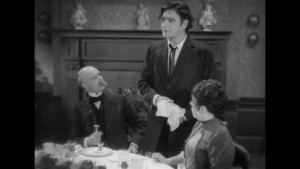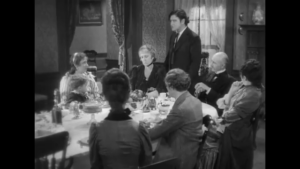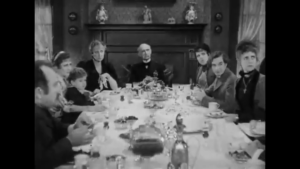Rating: 2.5 out of 5


![]()
I haven’t watched the other nominees from 1931 for Best Picture. I made the mistake when I said Shakespeare in Love deserved its Best Picture win, not thinking Saving Private Ryan and A Thin Red Line were also nominated in that year. It was a mistake on my part because I thought Saving Private Ryan won Best Picture. With that said, I don’t see how in the hell Cimarron won Best Picture. I will say that it is by far one of the Worst Best Picture award winners I have ever seen. Usually, I give the classics major props and leeway, but Cimarron was just all over the place in my eyes.

Directed by Wesley Ruggles is a western film that shows the evolution and growth of one town. When the government opens up the Oklahoma territory, which is now called The Oklahoma land rush of 1889, thousands of settlers descend upon the territory looking for their piece of land. One of those looking for land is Yancey Cravat (Dix), and his young bride, Sabra (Irene Dunne), cross the border from Wichita, Kansas, to join the throngs. Yancey is a jack of all trades, being a newspaperman, lawyer, and almost anything else you can think of. During the rush, Yancey is outsmarted by Dixie Lee (Taylor), who takes the claim he really wanted for herself. With the missed opportunity, Yancey packs his family up and moves them to the small but growing town of Osage. As the town grows, Yancey gets his itch again to ride around and leave his family behind. During the times of his absences, his wife Sabra becomes a fixture in the community she once hated.
I don’t even know where to begin with this review since there is so much going through my head. I found the story was absolutely painful to watch. Did it have its moments? Yes, I want to say that the film’s start was fascinating. Seeing people rush out to stake their claim of land is wild. People of all ages race for that land while their wagons fall apart. Straight up chaos.

Now, the film has two stories that revolve around the Cravat family. One is with Yancey’s sense of adventure, and the other deals with Sabra and her life in Osage. I am going to be real. About halfway through the film, I thought Yancey was cool. He seemed to know everyone, and he was a caring family man. She convinced his wife to move to the rough and upstart Osage. The town seemed to know him and his big smile. He even gave a sermon, cleaned up the town when he started his newspaper, and shot Lon, who was terrorizing the town with his crew. Yet, when the new land was released, dude left his young family behind to play adventurer. The first time he left, dude was gone for five whole years before returning. Then he would stay for like a month and then dip out for seven years until it got to the point he was never around. I’m surprised his wife didn’t divorce his weak ass. He wasn’t a family man at all and shouldn’t be praised.
I give more respect to Sabra’s storyline than anything else, even though she was a MAJOR racist. Sabra didn’t even want to move to Osage and thought the town was too rough and uncivilized. Yet, she listened to Yancey and stayed. After helping her husband start his newspaper, she ran it while he was gone. She continued to run it until he was off on his adventures. The one scene I didn’t like was when she wanted to put something in the paper, and he was like, when his name is off the editor and chief line, then she can make the decisions. Dude, you haven’t been around at all to make decisions. She did all the work. As time went on, she became a congresswoman, and your punk ass just drilled oil. Sabra’s hatred for the Native Americans was unjustified. Suddenly at the end, when her son married one, she found the light and was supportive. Get over yourself.

I will say that some of the scenes in this film were entertaining. The gunfight with The Kid was probably the most exciting action in the whole movie. When we are introduced to the Kid, he first raided Yancey and his wife, but he let them go since he knew Yancey. Then net time, he rolls up in Osage, and his crew starts shooting up the place until Yancey handles it. Also, Isaiah didn’t need to be killed in this film during this scene.
Richard Dix, as Yancey Cravat, was strong and had the smile and charisma for this role. Yancey was a person who could never stay in one place and seemed like he wasn’t a racist, but I’m sorry, dude was. When they made it to Osage, and he see a watermelon cart, he yelled to Isaiah about it. Besides that, he was a deadbeat dad. I’ll give him credit; he did save Daisy from being thrown out. Irene Dunne as Sabra Cravat was good in her role. Even though Sabra was also a racist, she was a family woman first and tried her best for the community.
Lastly, the cinematography of this film was a highlight. The opening was the highlight, but it really stood out after every time skip. We saw the small town of Osage grow from just a couple of small buildings to a town and then one with some large buildings and roads. Finally, it grew to a city with cars until it was a major city.
Cimarron is one of the worst Best Picture winners’ films I’ve seen. It was all over the place and just was a waste of time after a while. Dix and Dunne were respectable in their roles, but they couldn’t save this film from the boredom that will descend upon you. You can skip this one out of all the western movies out there.